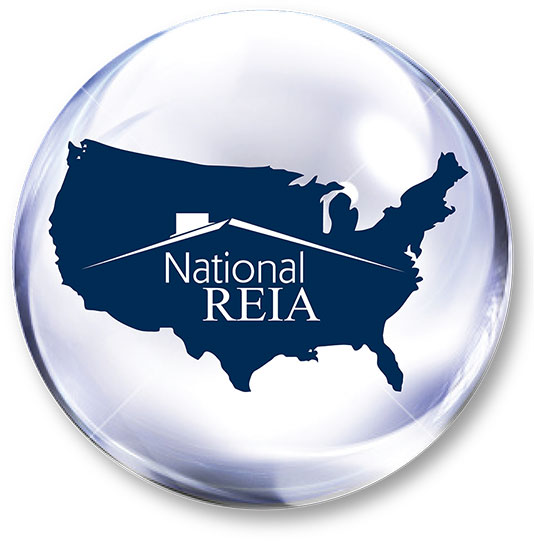By John Burley
I would like to share with you my 17 Personal Rules of Investing. These are the rules that guide me while I am actively pursuing Advanced Level Five Active Investing. These 17 rules are the rules that have allowed me to build my wealth and reach personal financial freedom. I trust they will help you on your personal journey to Financial Freedom.
Take a good look at the Rules that you are currently using with regards to money and investing. Are YOUR Rules empowering or limiting your financial success? If they are not empowering you, then change them. Now.
One last thing, rules must be written out and posted in a prominent place. They must be looked at constantly until they are internalized and become the guiding force for all that you do.
And now here are my 17 Personal Rules of Investing.Read, enjoy, and learn!
Rule 1 – My Rules
I play by My Rules, not the rules of anyone else. Active Investors know that they must have control at all times. They do not play by the rules dictated by others (such as so-called ‘expert’ financial planners, accountants, lawyers, tax planners, brokers and bankers who all too often play by the rules of “It Can’t Be Done” or “We Don’t Do That Here”). Active Investors design their own Rules and adapt the world to them rather than complying with and adapting to the rules of others.
Note: this does not mean breaking the law! All that I do, whether in the area of business, tax planning, entity strategies, or investing is all completely legal and above board. There is no room in the business and investing world of the Active Investor (where your reputation is as vital as your skills), for shades of gray. There is no need. Everything I could ever want to do can be achieved using my own rules, within the framework of existing laws, regulations and codes. I only do what is “white as the driven snow.” I strongly recommend you do the same.
Rule 2 – The Twelve Generalized Principles of Active Investing
Always respect and follow the Twelve Generalized Principles of Active Investing. They are the blueprints upon which to build your Rules.
- Belief
- Do What You Love/Love What You Do
- Serve
- Niche
- Leverage
- Lateral Thinking
- Market Research
- Efficiency
- Lag
- Timing
- Stewardship
- Proper Action
Rule 3 – Integrity
In my opinion, the most important thing is Integrity. If the people I am playing (working) with do not have Integrity I don’t play (do business) with them. I have found out the hard way that people with questionable Integrity usually turn on you before the deal is done. Remember that Integrity is more important than anything else.
Rule 4 – Know the Rules
Before I play “The Game” I want to know four things: a) the Rules of the Market; b) the Rules of “The Game” (based on my Niche); c) the Rules to ROIAT (Return on Investment after Tax) Maximization; d) My Rules.
Rule 5 – Buy Wholesale
As an investor, I know that to make a profit I must buy wholesale (or sub-wholesale) and then resell at retail (or just below). This can be price and/or terms, depending on my Niche.
Rule 6 – Profit at Purchase
Make your money when you buy, not when you sell. When making a decision on what to offer for a property I make a decision solely based on the cash flow or capital gains profit (after expenses). I NEVER include the tax savings or appreciation. I don’t include them because they are unknown, constantly changing and not guaranteed.
Warning: Beware of Salespeople cloaked as Real Estate Agents or Marketers, Stock Brokers, Financial Planners, Investment Advisors, etc. All those fancy charts, brochures, and presentations are designed to fool you. Do not ever buy an investment based on “projected yields” or “future appreciation” or “potential tax savings.” That is the “game” of the unsuccessful Investor.
Rule 7 – Low-Risk Idea
I only have at risk a small percentage (0 – 3%) of MY net worth in any one investment. I do this because I know that it is more important to manage risk than increase upside. Too large of a position sets one up for huge risks. I want to eliminate the possibility (fear) of being financially ruined by a couple of deals gone bad.
Clarification: when I say that I only have less than 3% of my net worth at risk in any one investment I am not saying that I only have 3% invested in total. What I am saying is that I have used Level Five Advanced Investor techniques (Principles and Rules) to limit my downside risk to just 0-3% of any given investment. I generally have at least 90-95% of my investment capital invested at any one time. Just not 90-95% of it at risk in any one deal! I minimize my risk by following proper money management risk reduction strategies.
Rule 8 – Other People’s Money
I use OPM (Other People’s Money) whenever possible. Leverage allows me to do far more transactions than I ever could on my own. Remember, it’s always better to have a piece of the pie than none of the pie.
Rule 9 – Money Back
I structure my transactions so that if I have money in the deal I get all of it back in the quickest possible time. Remember, one of the major keys to money is to have it work for you and once you have your initial investment back your money is working for you at the rate of return of infinity. On most of my transactions, I have all of my money back within the first few years.
Rule 10 – Don’t Wanters
I buy from people who really do not want their property. This means that I generally buy my properties from highly motivated sellers (trustees of deceased estates or bankruptcies, liquidators, vacant houses, mortgages in possession, trustee sales, subject to, foreclosures, etc.). If someone does not want their property they are much more likely to be flexible on their price or terms to dispose of it. You are entering the market on Wholesale Price and/or Wholesale Terms which will allow you to easily determine your Profit at Purchase. In any market, no matter how good, somewhere between 2-5% of sellers are highly motivated to sell.
Rule 11 – Cash Flow
Although I often acquire properties solely to turn them around for a capital gain, I prefer to make as much of my profit as I can in the form of Cash Flow. Note that I NEVER do negative cash flow. The property, regardless of price range, must make money the first year.
Rule 12 – Define the Investment
When it comes to Real Estate I prefer to invest in single-family homes that meet my criteria or definition that I have very clearly laid out:
- Priced 20% or more below the median;
- 3 bed/ 1 3/4+ bath (1200-1500 sq.ft. /100-160 sq.m.) (or whatever is customary and usual in your area);
- Covered Parking;
- Fenced Yard;
- Livable Condition;
-
Safe Neighborhood;
-
A Home a Good Family would want to live in.
Rule 13 – No Emotions
When I invest, my primary concern is the Return on Investment after taxes. The only thing that matters is the Bottom Line. I don’t care what color the carpet is or about the pretty garden. Just give me the numbers. When it comes to investing, the numbers are the most important thing. Emotions play a very small part. I always tell students who are calling for assistance “Don’t tell me about the house. Tell me about the numbers." So be like the professionals. Don't get emotionally involved. Get Rich instead. Remember the key to investing is focusing on “Them Money and The Numbers”.
Rule 14 – Ride the Winners and Cut the Losers
I have found that most people do the exact opposite. They often do this because of the recommendations of their “Professional” advisors. This happens because stockbrokers are trained to tell you to “sell” when you make a small profit. The bottom line being, the broker wants to make more commission when you sell and then reinvest (over and over and over). How often have you or someone you knew, sold an investment for a respectable profit only to see the investment continue to go through the roof? How often have you held on to an investment despite the fact that it was a “Dog”, hoping that someday it would come back? Top investors “Ride the Winners and Cut the Losers”. They do this primarily through strict money management and tight control over their own investment psychology. You should do the same.
Rule 15 – Invest Long Term
Most people look at far too short a time frame in regard to their investments. They spend much time chopping and changing, running around looking for the next “Get Rich Quick” scheme or hot investment. The reality is that there are very few surefire and rapid-fire roads to Riches. Rather, the majority of "Get Rich" investments take time to bring home large returns.
When I invest, I primarily do so for the long term. I am not interested in “spending” assets after short or mid-term gains. I am looking towards my long-term goals of wealth-building and stewardship of my assets. Most of the best investments carry with them the power of compounding and Lag and are not designed to be readily capitalized upon over the short term.
When you assess an investment, be clear on your goals and your Timeframe. Do not ignore an investment simply because you believe its benefits are not instantaneous. Check the numbers and understand the power of money invested over time. Building wealth takes time. Invest for the long term.
Rule 16 – Open Mind to Adapt My Rules
Always be prepared, based upon your Market Research, to adapt YOUR RULES to a changing market to your own best advantage. Many investors fail dramatically due to dogged determination to stick to timeworn, but inflexible investment techniques or attitudes. You must always keep an open mind in relation to the expectations and changes of your market.
Rule 17 – Continuing Education
Keep current on your Market Research at all times and practice your skills of Lateral Thinking to keep up with or anticipate the changes. I am constantly attending seminars, reading, and learning. Throughout the world, I seek out the best teachers and information I can find. I then pay to attend their seminars as a student to learn what they have to teach.
I strive to continually learn more to improve myself, my relationships, my psychology, my business and my investing. I accomplish this by attending seminars, listening to tapes, watching videos and reading. Education is an ongoing process and I strongly encourage you to continue your learning.
REAPS Main Meeting
Secrets of Raising Private Money with John Burley
Bellevue Hilton Hilton in Bellevue - Downstairs in Ballroom 300 112th Ave SE Bellevue Washington, 98004
Thursday, January 25, 2018
Doors Open: 6:00pm
Meeting Starts: 7:00pm
“REAPS is the oldest – and largest - Professional Association for the real estate investor this side of the Mississippi. We provide education and networking resources for real estate investors, those who want to be investors and anyone who provides value to our members. Our goals are to motivate and support our members and guests through education, discussion, legislative action and networking. We host over 40 live events a year around Puget Sound and they are all open to the public. If you've never attended one of our meetings, just email our office at [email protected] and be our guest for free!"


